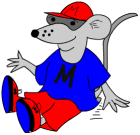Free maths worksheet: making lists (pg 3)
 Some more lists to make with these two maths worksheets, this time for year 2 children. By this age there are a large number of opportunities in the home for making and organising lists. Apart from the obvious shopping, going on holiday is a great source for list making – what clothes do we take, what food in the car etc etc. Jobs to do in the garden, flowers we have, TV programmes etc etc. You can also begin to categorise the lists into two sections: likes and dislikes, hot meals, cold meals, take aways, home cooking and so on.
Some more lists to make with these two maths worksheets, this time for year 2 children. By this age there are a large number of opportunities in the home for making and organising lists. Apart from the obvious shopping, going on holiday is a great source for list making – what clothes do we take, what food in the car etc etc. Jobs to do in the garden, flowers we have, TV programmes etc etc. You can also begin to categorise the lists into two sections: likes and dislikes, hot meals, cold meals, take aways, home cooking and so on.
Why do this? Because it helps with organising and classifying information which is very important later when creating graphs, using venn diagrams etc.
Free maths worksheet: Making lists (pg 3)
Free maths worksheet: Making lists (pg 4)
 The first of these two worksheets gives an opportunity to sort items into two categories: food and not food. Apologies for the drawings on these – it might be a good idea to discuss what the drawings represent before classifying them as food, or not food!
The first of these two worksheets gives an opportunity to sort items into two categories: food and not food. Apologies for the drawings on these – it might be a good idea to discuss what the drawings represent before classifying them as food, or not food! Not only is this a hard type of maths puzzle to complete, the words themselves are quite tricky.
Not only is this a hard type of maths puzzle to complete, the words themselves are quite tricky.